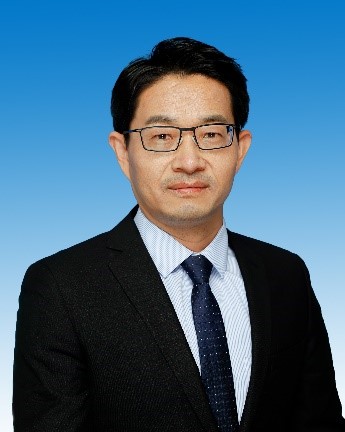
Prof. Fufeng Liu
College of Biotechnology, Tianjin University of Science & Technology, ChinaSpeech Title: Construction and catalytic study of oriented photo-crosslinking immobilized enzyme by affinity peptide
Abstract: Oriented immobilization is conducive to preserve the catalytic activity of enzyme compared with random immobilization. Photo-crosslinking reaction with high temporal and spatial resolution was often used in oriented covalent immobilization protein. Herein, sucrose isomerase (SI) was selected as the model enzyme. Molecular simulation was perform to select the targeted immobilization region, which was far from the SI active site, and thus basically does not affect the enzymatic activity. Subsequently, a short peptide (H2N-VNIGGX-COOH, VG) with high affinity to this region was rational designed, and the non-natural amino acid 4-benzoyl-L-phenylalanine (Bpa) with the photosensitive group of benzophenone was introduced into its carboxyl terminal of the peptide VG. And then, the affinity between the ligand and the SI was validated. Thereafter, SI was immobilized on the surface of epoxy resin (EP) guiding by VG. The enzymatic activity, thermos-stability, and reusability of affinity directional photo-crosslinked immobilized sucrose isomerase (hv-EP-VG-SI) were systematically studied. The oriented immobilization enzymes were significantly improved in recycling and heat resistance. Moreover, hv-EP-VG-SI remained more than 90% of the original activity and 50% of activity after 11 cycles. The excellent reusability and stability of hv-EP-VG-SI can signiffcantly reduce the cost of enzymes in practical applications. It has high value in industrial production operations. This research provided a reference to produce isomaltulose by the industrial enzymatic method and also supported ideas for novel oriented immobilization enzymes.
Biography: Dr. Fufeng Liu, Tianjin distinguished Professor, Hong Kong scholar. He received his Ph. D. degree of Biochemical Engineering at Tianjin University in 2008 and then started his teaching and research career in Tianjin University and became an associate professor in 2011. He is a postdoctoral fellow under the “Hong Kong Scholars program” at the Hong Kong Polytechnic University from March 2013 to May 2015. From 2016, he has been a full professor of College of Biotechnology at Tianjin University of Science & Technology. In recent years, he integrates molecular simulations, theoretical models, biochemical and biophysical experiments to conduct fundamental research on the structure and function of proteins. His research interests include molecular dynamics simulations of the conformational transition and aggregation of amyloid protein associated human disease, rational design of enzyme molecules and multi-scale modeling of biological and material systems. His work has produced more than 140 research papers published in peer-reviewed international journals. He is now an academic editor of both foods and a member of the editorial board of Aging & Disease.

